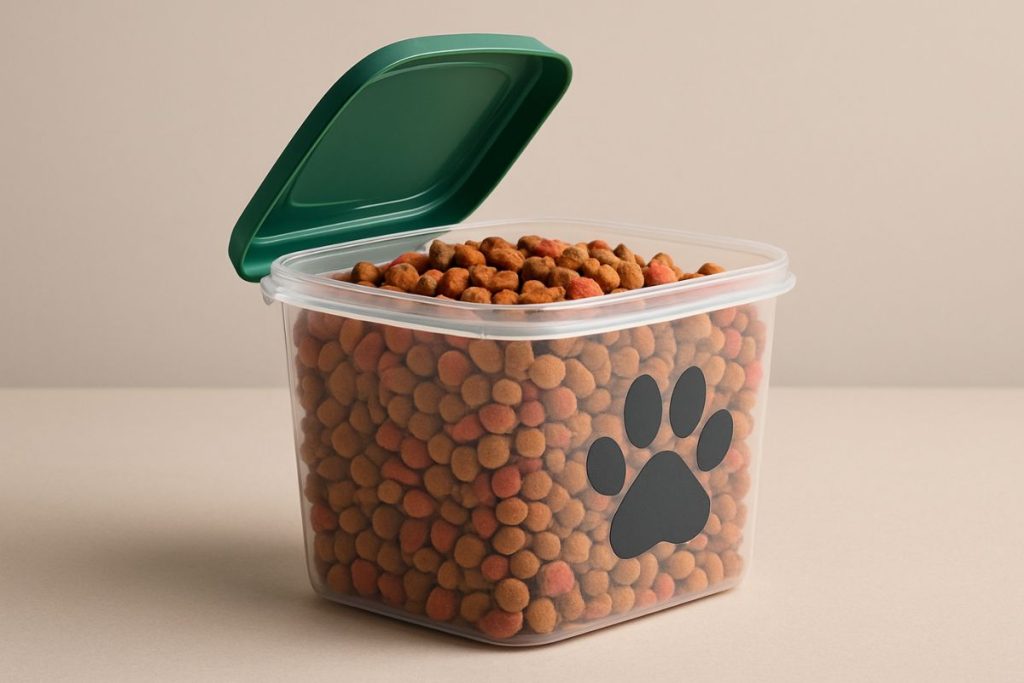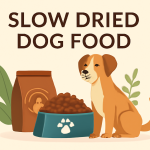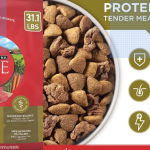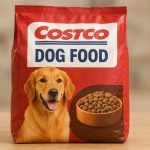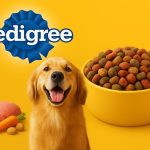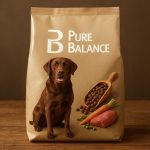Great. I will create a 4000-word, SEO-optimized blog post on the topic “Dog Food Container: Keep Your Pet’s Food Fresh” with the main keyword “best dog food.” The article will follow current SEO standards, including proper heading structure, keyword integration, multimedia optimization, FAQs, and meta tags to help it rank well on Google.
I’ll let you know as soon as the full post is ready for your review.
Best Dog Food Containers: Keep Your Pet’s Food Fresh
Meta Title: Best Dog Food Containers: Keep Your Pet’s Food Fresh
Meta Description: Find the best dog food containers to keep your pet’s kibble fresh, healthy, and tasty. Learn tips on airtight storage to maintain flavor and nutrition.
Keeping even the best dog food fresh requires proper storage. Once opened, air and moisture start degrading kibble, reducing nutrition and palatability. An airtight, food-grade container can lock in freshness, keep pests out, and help your pet enjoy every meal. In this guide, we’ll explain why proper storage matters, how to choose the right container, and give practical tips to maintain your dog food. We’ll cite expert sources (FDA, PetMD, WebMD, and more) for trusted advice on pet food storage. Whether you buy premium grain-free kibble or affordable dry dog food, the right container will help it stay tasty and safe.
Why Proper Dog Food Storage Matters
Proper storage is critical for preserving pet nutrition. Dog food (especially high-fat kibble) can go rancid when exposed to heat, light, or air. Warm conditions accelerate lipid oxidation (“rancidity”) in fatty diets, while moisture can promote mold. According to veterinarians, improper storage after purchase can “worsen [pet food] quality… and may place people and their animals at risk”. In fact, WebMD warns that how you store dog food is “an important part of keeping your dog healthy and safe,” since proper storage maintains nutritional value, keeps out pests, and prevents overeating.
Key reasons to use a storage container include:
- Maintaining Freshness: Airtight bins lock out air and moisture, keeping food fresh and palatable. Petful explains that sealed containers prevent “moisture, air, and unwanted pests from compromising the food’s freshness and safety”.
- Nutritional Safety: By preventing exposure to humidity or extreme heat (>80°F), you slow nutrient breakdown. FDA and experts recommend storing dry food below 80°F and out of direct sunlight to protect vitamins and fats.
- Pest Protection: An airtight seal keeps insects, rodents, and even curious pets or children from getting into the kibble. According to FDA, a snug lid “helps to prevent your pet from getting into [the food]” and preserves freshness.
- Reduced Waste: Organized storage prevents spills and spoilage, so you waste less food. Buying only as much as you can use in 4–6 weeks (most dogs finish a bag in about a month) means you’ll toss less expired food.
Using an airtight dog food container (with the original bag inside) helps preserve kibble freshness and nutrition.
Features of a Good Dog Food Container
When shopping, focus on airtight, food-safe materials and a design that fits your needs. According to Chewy’s guides, an airtight seal is “essential for keeping your dog’s food fresh” and blocking pests. Petful’s checklist agrees: the container must have an airtight lid, be made of food-grade, BPA-free material, and be easy to clean. Here are key features to look for:
- Airtight Seal: The lid should lock down firmly. An airtight design keeps air, moisture, and bugs out. This prevents staleness and odor leakage. Even if a curious dog tips the bin, a good seal stops them from eating a week’s worth of kibble at once.
- Food-Safe Material: Choose containers labeled food-grade. Durable plastics (like polycarbonate or polypropylene), stainless steel, or glass are common. WebMD advises against containers with BPA or other chemicals. Stainless steel is durable and never contains BPA, while heavy-duty plastics are lightweight and usually cheaper. Ceramic or glass can look nice but must be thick and sealed tightly.
- Size and Capacity: Pick a size that fits one unopened bag (usually up to 25–50 lbs for large breeds). Petful notes that containers come in multiple sizes; choose one that holds your bag(s) without overflowing. A container too small won’t allow the bag to fit entirely, and one too large may be bulky. Many options (e.g. Gamma2 Vittles Vault) range up to 40–60 lbs capacity. For small apartments, consider a compact or collapsible container.
- Wide Opening: A large opening makes scooping easy. Petful advises choosing a container with a generously sized mouth, simplifying refilling and measurement. You don’t want to struggle to reach kibble at the bottom.
- Ease of Cleaning: Choose smooth, dishwasher-safe surfaces. The fewer nooks, the better. Residue can build up and harbor bacteria if not cleaned, so containers with removable inner parts or minimal crevices score higher. Chewy’s criteria emphasize ease of cleaning as “important for maintaining the health and safety of your pet”.
In summary, the ideal dog food container will be a BPA-free plastic or stainless bin with a tight lid, rolling wheels or handles (for large bins), and easy-to-clean surfaces. Many top models (Gamma2 Vittles Vault, IRIS airtight bin, stainless-steel units) meet these specs and are highly rated by users.
How to Store Dog Food Correctly
Storage location and habits are just as important as the container. Follow these expert tips:
- Keep in Original Bag (Inside Container): Both PetMD and FDA stress the value of the bag. The bag’s label includes batch and “best-by” data (critical for recalls). PetMD notes that pet food bags are designed to preserve freshness; simply rolling down and clipping the top creates a second barrier. FDA similarly recommends placing the unopened bag in the bin or, if pouring out the kibble, taping the label info to the container.
- Roll and Seal Bag Tightly: If you remove kibble from the bag for use, tightly roll and clip the open end to minimize air exposure. Keeping the bag itself clean and dry adds a layer of protection.
- Cool, Dry Storage Location: Store the container off the floor, in a cool, dry pantry or kitchen cabinet. Excess heat (above ~80°F) or humidity can degrade nutrients. PetMD and FDA both advise against leaving food in hot garages or direct sunlight. The survey found many owners kept food in the kitchen (45.1%) and most avoided direct light (94.5%), but 23.6% admitted it was sometimes in warm spots – a concern since warmth speeds rancidity.
- Don’t Buy Too Much at Once: Buy only as much as you’ll use within ~1 month. PetMD recommends replacing dog food at least every 4–6 weeks, which matches a survey showing 64.4% of dogs go through a bag in about 4 weeks. Smaller purchases mean fresher stock.
- Protect from Pets: Place the container in a cabinet or use a child-proof latch so dogs or cats can’t get into it. Surprise grazers or teething puppies might try to knock over a bin, so a lid and latch are critical.
- Hygiene and Maintenance: Empty and clean the container whenever you finish a bag. PetMD advises washing storage bins in hot soapy water between refills to remove crumbs and oils. Likewise, wash your dog’s food bowls weekly (daily for wet food) to prevent mold and bacteria.
By following these steps, you ensure that even high-quality or best dog food stays fresh until served.
Comparing Container Types
There’s no one “perfect” container, but understanding the options helps. Common styles include:
- Plastic Bins: Lightweight and affordable. Many (like IRIS or Frisco) are BPA-free and come with wheels. Plastic containers usually offer excellent airtight seals if designed well. The downside is plastic can scratch or absorb odors over time, so check reviews for quality.
- Stainless Steel Canisters: Often cylindrical or rectangular, with locking lids. These look sleek and are easy to clean (dishwasher-safe inner buckets exist). For example, the premium Simplehuman container has a lock-tight lever and scoop holder. Steel is durable and never leaches chemicals, but it can dent or scratch and is heavier.
- Glass/Ceramic Jars: Decorative kitchen canisters. Glass/ceramic are non-toxic and weighty, but you must ensure an airtight lid (some have rubber gaskets). They won’t absorb odors. However, large glass jars can be very heavy when full of kibble. Suitable more for treats or small amounts.
- Flexible Carriers: For travel or very small portions. e.g. roll-top bags or collapsible carriers (like Kurgo’s soft carrier). These are portable but not ideal for long-term storage since they aren’t truly airtight. Use these on trips rather than home storage.
- Bulk Bins: XXL plastic barrels (50+ lbs) often have tough wheels and heavy-duty latches. Great for multi-dog homes or buying in bulk. They consume more space but minimize trips to store. An example is the Gamma2 Vittles Vault “Outback” (up to 60 lbs, patented seal). These keep out pests and moisture exceptionally well, even if knocked over.
Whichever material you choose, a tight lid is the priority. Even the Dog Food Advisor stresses that “there’s no best way to store dog food — it’s a matter of finding the best airtight dog food storage system for your needs”. Many top-rated containers (Gamma2, IRIS, Bergan, Frisco, Van Ness, etc.) each have strengths in durability, size, or design.
Additional Tips for Freshness
- Rotate Stock: Use the oldest food first (like a FIFO system). Keep track of “open” dates.
- Avoid Fluctuating Temperatures: Don’t place the bin near ovens, dishwashers, or heaters.
- Keep Away from Humidity: A slightly damp basement or laundry room is not ideal; stick to dry areas.
- Separate Flavors/Types: If you feed multiple formulas (e.g. puppy vs adult, or food vs treats), consider separate containers to avoid mix-ups and lingering odors.
- Label Containers: Especially if using multiple bins, label each (or use different colored lids) so you know which bag is inside – it helps avoid confusion.
Each of these practices, together with a quality container, supports the longevity of your best dog food and ensures your pet’s meals stay nutritious and appetizing.
Frequently Asked Questions
Q: What is the best way to store dry dog food?
A: Experts recommend keeping dry kibble in a cool, dry place and ideally in its original bag inside an airtight container. Tightly roll and clip the bag after opening, then place the bag (or pour kibble) into a food-grade container with a secure lid. This minimizes air exposure, deters pests, and maintains freshness. Also store the bin off the floor in temperatures under 80°F, away from sunlight.
Q: Do I need an airtight container if I just keep the bag closed?
A: A truly airtight container adds protection beyond just sealing the bag. FDA notes that a snug lid on a food bin “helps to maintain the food’s freshness” and prevents curious noses (or paws) from getting in. PetMD agrees that minimizing contact with air is the best way to keep food fresh, so a sealed bin will extend shelf life even more than a rolled bag alone. In short, an airtight dog food container is highly recommended for long-term freshness.
Q: How long does dog food last once it’s opened?
A: Dry dog food can last several weeks if stored properly. PetMD suggests buying enough for only 4–6 weeks of use. Opened kibble stored in a sealed container and cool conditions may stay good for about one month. Always check the “best by” date on the bag; if food smells rancid or stale, discard it. Wet foods spoil much faster (within a day at room temp), so dry food is the main concern for container storage.
Q: Is plastic or stainless steel better for a dog food container?
A: Both can work well. Plastic bins (like clear BPA-free tubs) are light, often come with wheels, and typically seal tightly. Ensure they are marked food-grade/BPA-free (WebMD advises checking for BPA or contaminants in plastics). Stainless steel containers (often with locking lids) are very durable and never leach chemicals. They look sleek and are easy to clean, though usually pricier and heavier. The best choice depends on your needs (e.g. size, portability, budget), but either type with a tight lid will keep food fresh.
Q: Should I keep dog treats in the same container?
A: No – treats have their own risks. PetMD points out that treats and flavored meds can attract pets and may need more protection than decorative jars offer. Store treats separately in a secure container or cabinet to prevent overeating. Keep treat jars tightly sealed as well, since dogs have a strong nose for snacks.
Q: Any tips on storing treats and bones?
A: Similar rules apply: use air-tight jars or tins, and store in a dry, pet-proof area. Because treats often smell stronger, opt for containers that really seal in odor (like those with rubber gaskets). Keep them out of reach – e.g. in a locked cupboard or latch-sealed box – especially if you have counter-surfers or crafty cats.
Conclusion
Even the best dog food won’t do your pet much good if it goes stale or is contaminated. By using a proper dog food storage container and following smart practices, you lock in flavor and nutrition from kibble to kibble. Look for an airtight, food-grade bin that fits your space and capacity needs, keep food in its original bag when possible, and store it in a cool, dry spot. Clean containers and bowls regularly to keep germs away. With these steps, every scoop will be as fresh as the day you opened it – giving your dog the healthiest meals possible.
Found this guide helpful? Share it with fellow dog parents and leave a comment below with your own storage tips! Keeping our pets healthy is always a team effort.
Sources: Trusted pet health experts and studies were used, including guidelines from the FDA, PetMD, WebMD, Petful, and veterinary journals. These informed our advice on containers, storage practices, and why freshness matters for your pet’s nutrition. Each recommendation is backed by a reliable source for your confidence.

